Nestled at the start of the breathtaking Cliff Walk in Ardmore, County Waterford, lies a site of profound historical and spiritual significance: St. Declan’s Well. This ancient well is not just a water source; it’s a gateway to Ireland’s rich heritage, steeped in the legacy of one of its earliest saints.
A Glimpse into History
Legend has it that St. Declan, who founded a seminary in Ardmore around 416 AD, used this very well as a baptistery long before St. Patrick arrived in Ireland in 431 AD. The well served as a vital spiritual hub for early Christians in the region, marking Ardmore as a significant center of Christianization.
The Well’s Mystical Origins
Imagine St. Declan, a dedicated missionary, retreating to this tranquil spot to reflect and pray. It is here that he constructed a small cell beside the well, seeking solitude from the throngs of pilgrims drawn to his teachings. The remnants of this cell can still be seen today, alongside the ruins of the church built in his honor.
The Architecture and Significance
The Holy Well is adorned with three medieval stone crucifixions integrated into its modern masonry, symbolizing its enduring connection to faith. In the past, thousands gather at St. Declan’s Well to perform rounds or “stations” during the feast day on July 24th or the nearest Sunday. This vibrant tradition continues to draw pilgrims who believe in the healing powers of its waters.
A Tradition That Endures
The celebration surrounding St. Declan’s Well is known as Pattern Sunday, where visitors partake in rituals that blend ancient customs with Christian practices. Despite attempts to suppress these traditions over the years, they have persisted, showcasing the resilience of local culture and spirituality.
In 1900, thousands flocked to Ardmore to honor St. Declan, and even today, many pilgrims recount miraculous healings attributed to the well’s sacred waters. One local even shared how he was cured of an ailment that baffled doctors after visiting St. Declan’s Well!
Visiting St. Declan’s Well Today
When you visit this enchanting site:
- Experience Spirituality: Join fellow pilgrims during feast days for mass and prayers at midnight on July 23rd.
- Explore Nature: Take in the stunning coastal views along the Cliff Walk leading to this historic well.
- Reflect on History: Contemplate St. Declan’s profound impact on Christianity in Ireland.
A Personal Connection
If you’re looking to connect with this sacred site personally—perhaps for a baptism or special occasion—consider bringing back some water from St. Declan’s Well as a cherished keepsake or blessing for your loved ones.
Conclusion
St. Declan’s Well is more than just a historical landmark; it’s a living testament to faith, resilience, and community spirit that has thrived for centuries in Ardmore. Whether you seek healing, reflection or wish to immerse yourself in Ireland’s ancient traditions, visiting this sacred site promises an unforgettable experience steeped in history and spirituality.
Come discover the magic of St. Declan’s Well—where every drop tells a story!
Citations:
[1] https://www.ardmorewaterford.com/st-declans-well-ardmore/
From an earlier post, we learn many great reasons why Ardmore is famous. Its heritage leads the way as part of Ireland’s Ancient East.
And here’s just one of them.
St Declan founded a seminary in Ardmore circa 416. The Holy Well at the beginning of the Cliff Walk served as a baptistery for St. Declan who Christianised the area of Decies before St. Patrick came in 431 A.D. They met a number of times at Cashel. St. Declan later retired for greater seclusion to a little cell he constructed at the spot where now stands the ruined church beside the Holy Well. There is no uniform date for this church; the western section is the earlier construction, whereas parts of the eastern end show signs of 14th-century work.
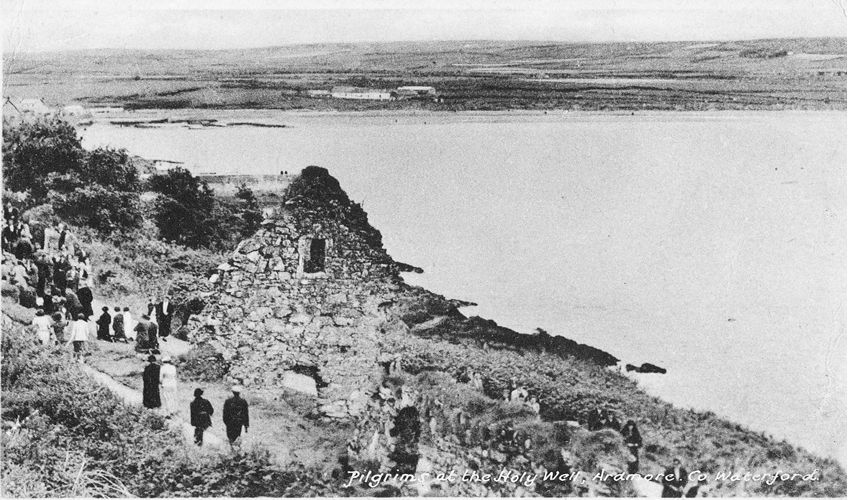
Like every other ancient monument in Ardmore, the Holy Well is dedicated to St. Declan. Three rude crucifixions (apparently late medieval) in stone have seen built into the modern masonry which surmounts the well. Rounds or Stations are performed at the well and church ruin by thousands of persons on each recurring feast day of the saint (July 24th) or on the Sunday within its octave. At midnight on the 23rd of July, a mass sometimes celebrated at the Well.
The following is quoted from a local paper [Dungarvan Observer 1936] under the heading “St. Declan’s Well, Ardmore”: “A young local man writes stating that on his first visit to St. Declan’s Blessed Well at Ardmore he was cured of an ailment which the doctor had failed to cure. He exhorts people to visit the Holy Well on July 23rd and 24th each year.”
The rounds at the Holy Well are now the central feature of the Pattern – cults involving water are more adaptable to Christian doctrine. Attempts to suppress the Pattern on grounds of pagan practices had failed at Ardmore as elsewhere. In 1900 a few thousand pilgrims are still visiting Ardmore on the 24th of July.
From the early 1900’s the records start mentioning that the main gathering takes place on ‘Pattern Sunday’ – the Sunday nearest the 24th July, Canon Power says that under a kind of ecclesiastical semi-approval a revival of the celebration commenced. Fr. John Walsh P.P. obtained an indulgence in 1903 from the Holy See for the celebration in the church. These services ceased after some years, however. It is possible that the midnight vigil on the eve of the 24th of July developed as a reaction to this. (Taken from the Ardmore Journal)
The Kilkenny and the South East Archeological Society 1898 wrote that:
DYSERT Church – The remains of this church, which stand on the cliff edge half a mile to the east of the buildings just described, are by no means in a good state of preservation. Indeed little more survives than the ruinous west gable and portion of the south side wall with its doorway. The church was erected on the site of a little cell, built for himself by Declan in his old age when he wished to escape the concourse of pilgrims who flocked to Ardmore.
In this cell, which, says the “Life” already alluded to, he loved very much,’) the great apostle of the Desii breathed his last, consoled by the ministrations of his disciple, St. Liach, Moelethrim O’Dhuibe Rathra, a 13th-century bishop of Ardmore, is credited with the erection of the church now in ruins. Unfortunately, the doorway is so much disfigured that but little as to the age of the building can be deduced from it with certainty. The inverted keystone of the flat arch over the doorway has puzzled many a budding architect. Can you solve the puzzle, reader?
ST. DECLAN’S WELL – Besides the min last described is the Holy Well dedicated, like every other ancient monument in Ardmore, to St. Declan. Three rude crucifixions (apparently late medieval) in stone have been built into the modern masonry which surmounts the well. Rounds or “stations” are performed at the well and church ruin by thousands of persons on each recurring feast day of the saint (July 24th) or on the Sunday within its octave.

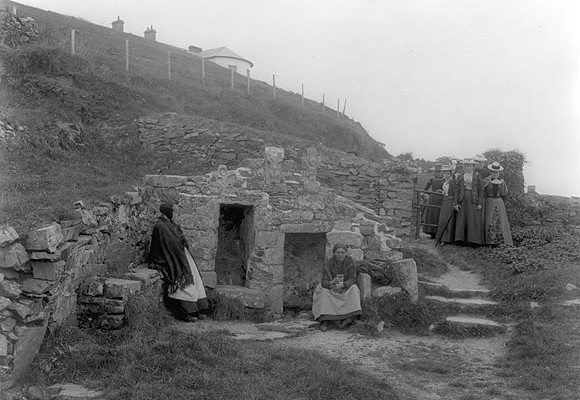
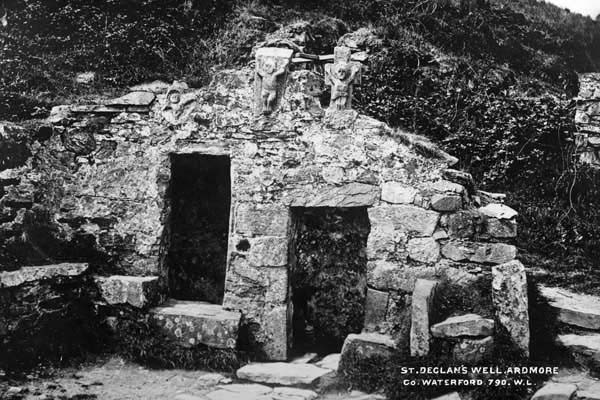
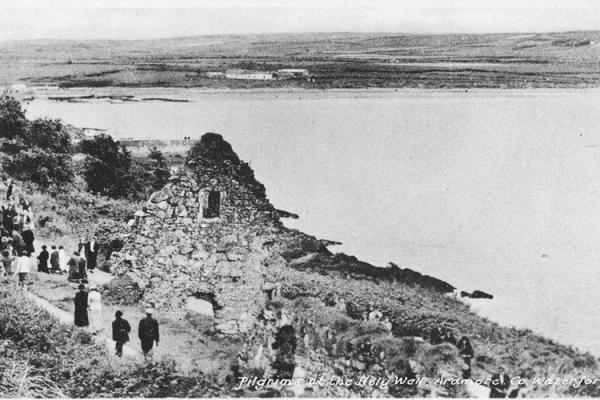
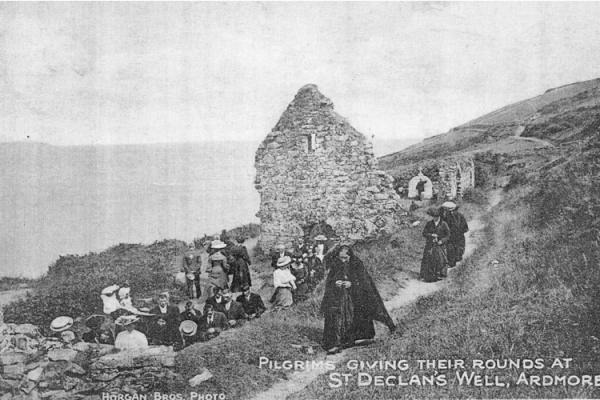
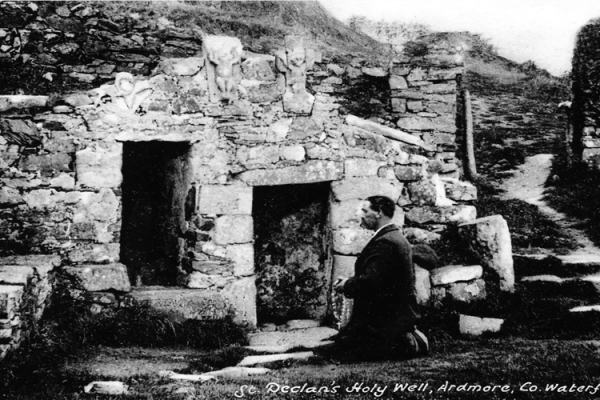
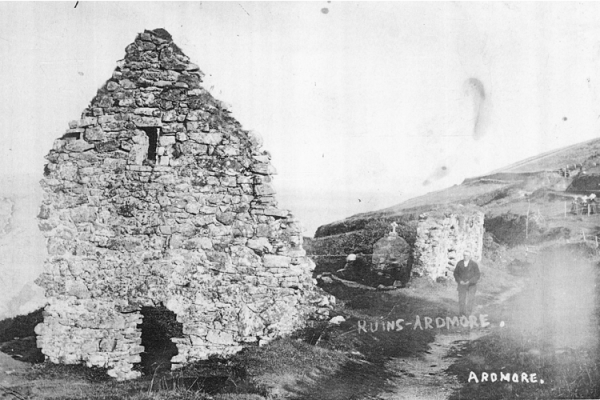
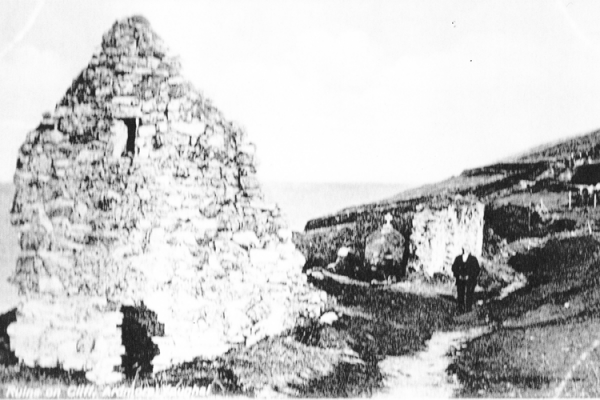
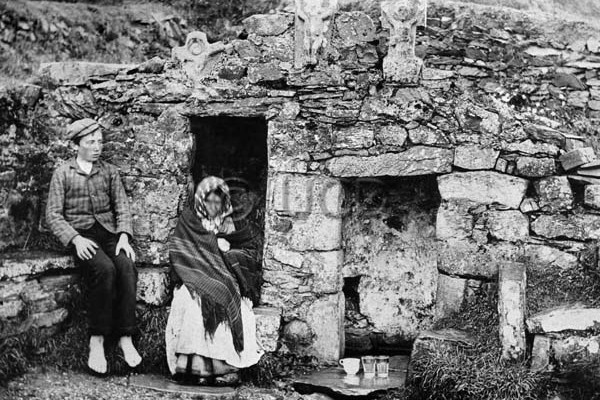
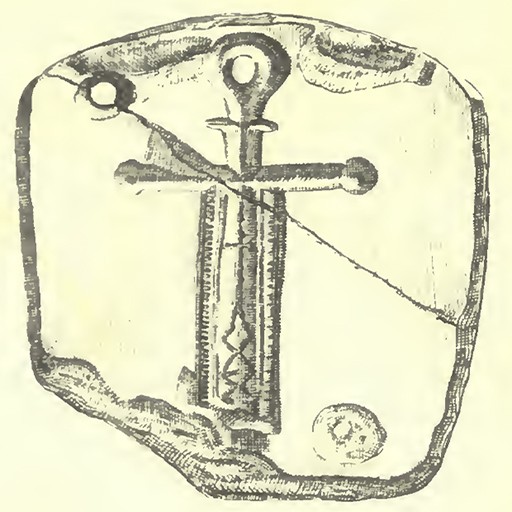
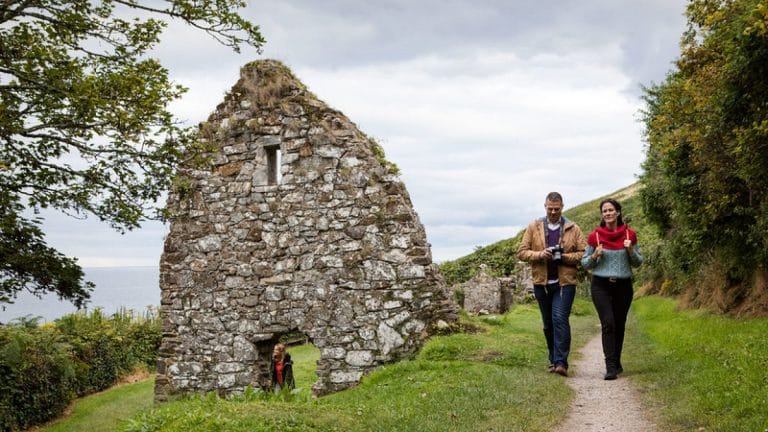
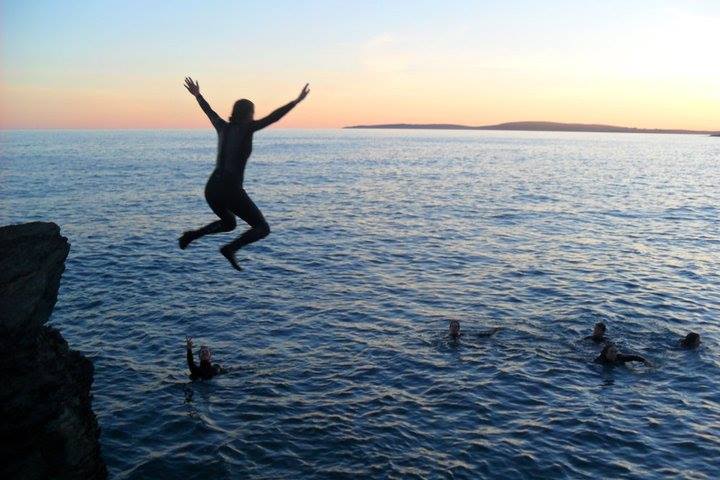
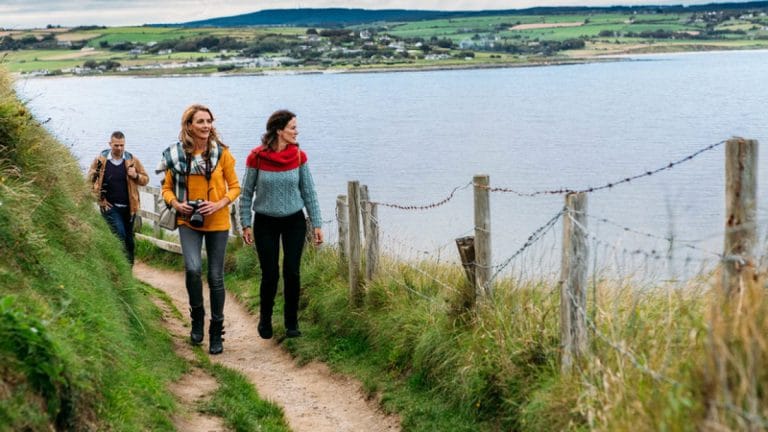
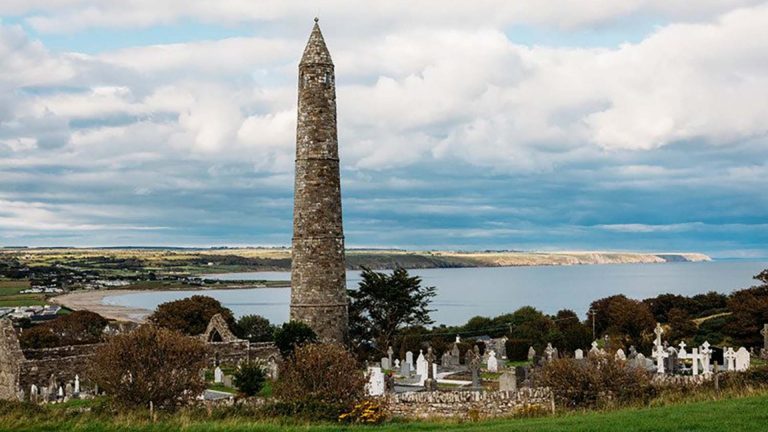
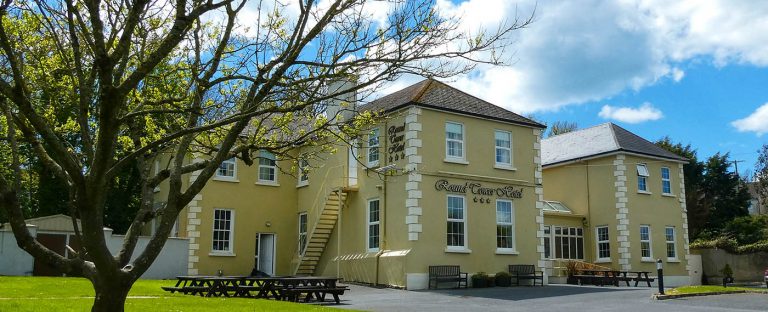
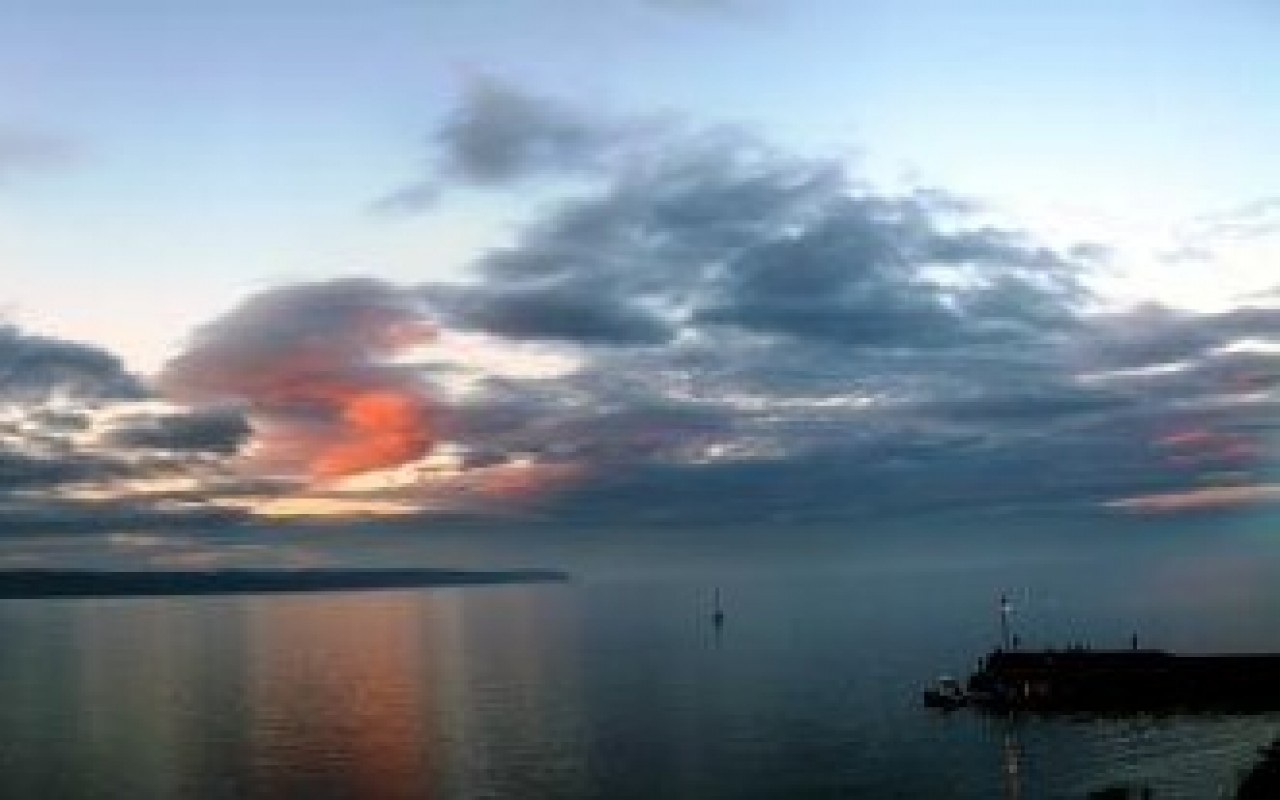
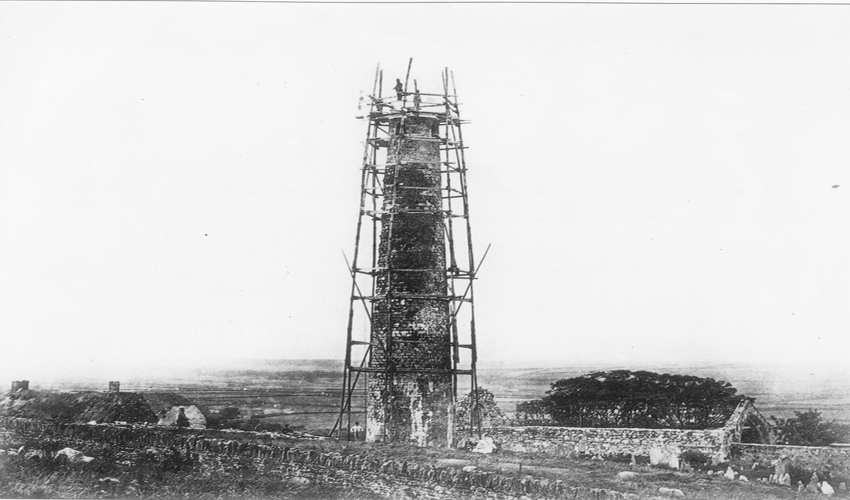
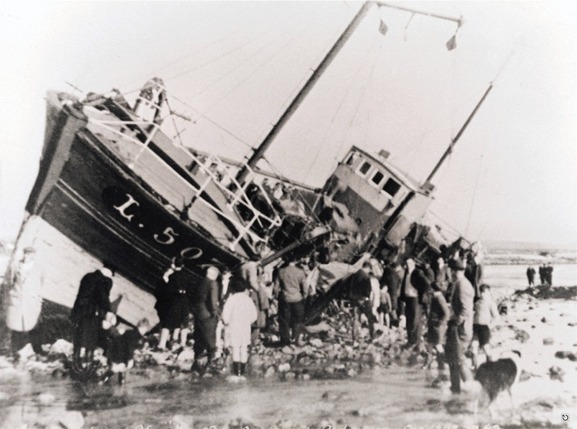
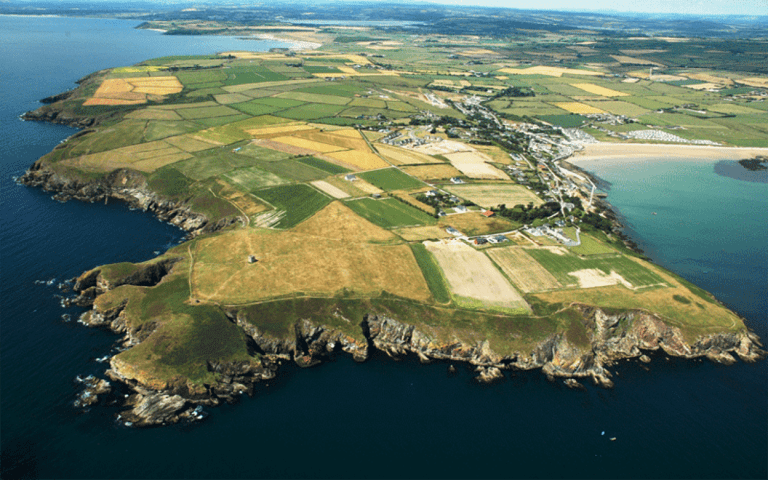
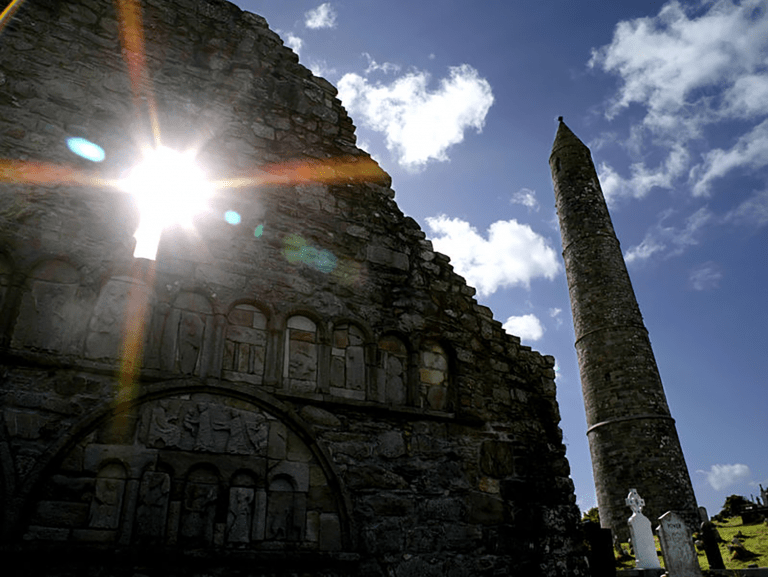
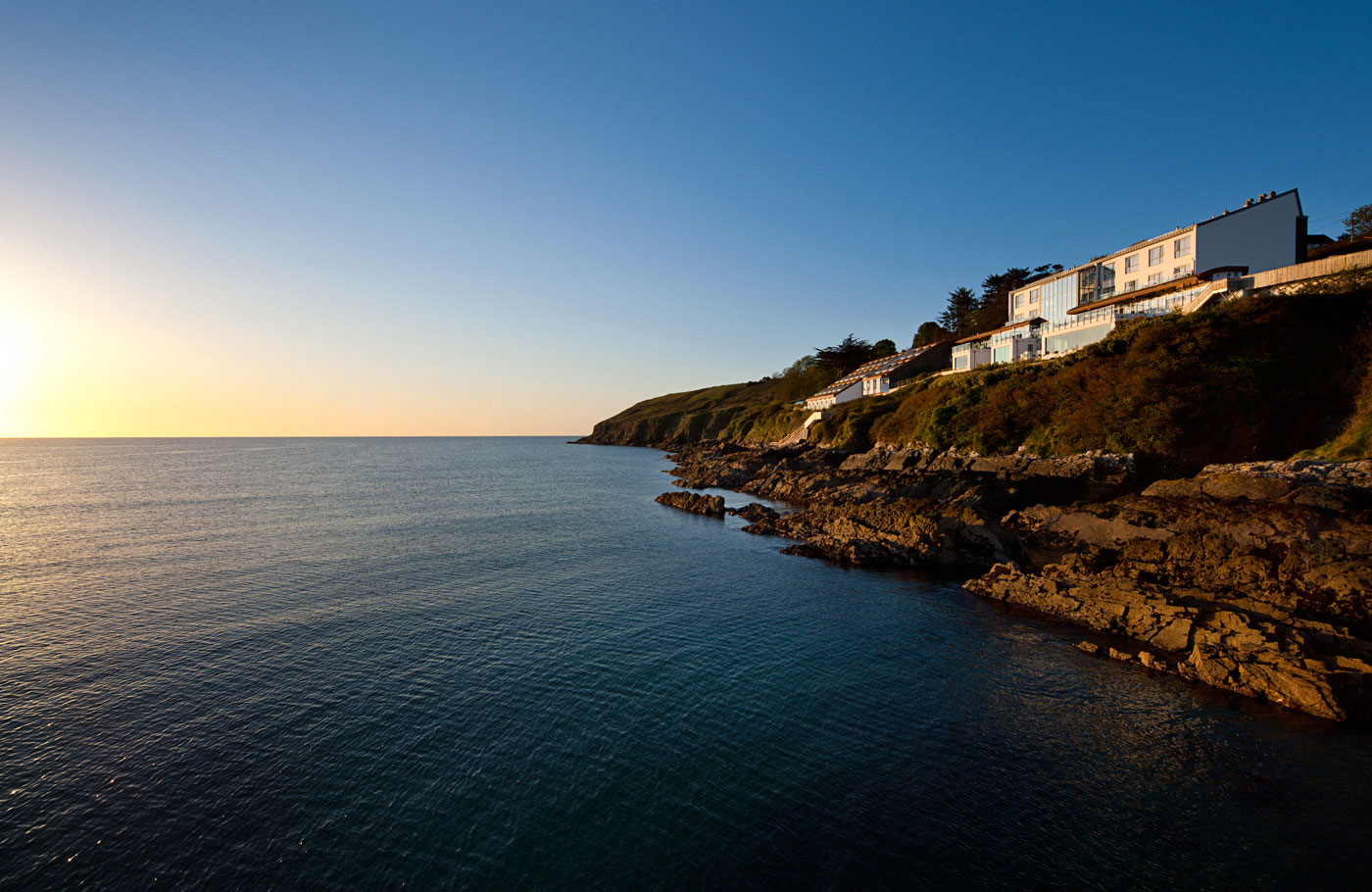
Is there a way to acquire a vial of water from St Declan’s well? My grandson, Declan, will be Christened in early July and it would be wonderful to have some of this water. I am traveling to Ireland this summer – but not until August – too late to bring water back for his Baptism.
Contact the local council of the area and parish regarding this. It’s bit late now, if you weren’t able to get it for his baptism you could still potentially get it sent over in a vial as a memorabilia item for him.